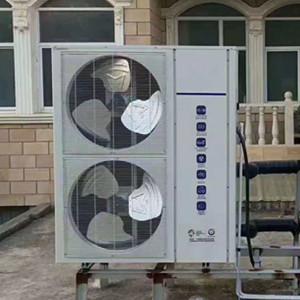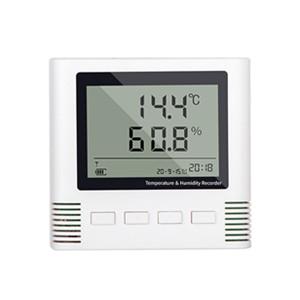What Would Make a Heat pump Freeze up?
In winter, cold water, insufficient airflow, stuck diverter valves, and
defrost mode failures can all cause the heat pump to freeze. In the summer, you
can see ice build up on the evaporator coils to prevent low system refrigerant,
dirty coils, and poor airflow.
What causes heat pumps to freeze in winter?
1. Dripping
Rain, snow or water vapor can fall on the device and create an ice layer
on top of the heat pump.
This is absolutely normal, these heating units are designed to withstand
freezing temperatures.
Tip: Drips from gutters can also be a problem. So if there is a leak, be
sure to pay attention to the leak.
The defrost mode of the heat pump should solve this problem. If you want
to "help" the unit manually, don't use anything sharp to remove ice
from the heat pump - these can easily damage the coils and fins.
You can try removing ice cubes with a garden hose. Also, keep leaves and
snow away from equipment (including under heat pumps).
2. Insufficient airflow
Airflow allows the device to capture heat from the outside air and
transfer it into the house. But without enough air going through the coils, the
evaporator coils will cool to very low temperatures, causing the heat pump to
freeze.
There are many things that can restrict airflow in your device:
(1) Twigs, leaves, snow and debris can build up around the heat pump.
You must make sure that not only the actual (2) unit, but that the area around
the heat pump is free of any objects.
(3) A clogged air filter may be the culprit.
For example, supply and return pipes may be blocked by furniture.
(4) There may also be obstructions in the piping system.
3. Slab settlement
Many heat pumps are placed on concrete slabs.
You should not place the device directly on the ground as insects can
easily enter the device. Plus, a tablet like this will just make your backyard
(or wherever else you decide to put your device) look neater.
The problem with slabs is that over time it sinks into the ground and
even tip over. This restricts airflow and blocks drainage paths.
In this case, you must level the sinker.
4. Compressor problems
The compressor is basically the heart of the heat pump as it moves the
refrigerant through the system by changing the pressure.
Of course, if the device can't extract the heat, then it freezes over in the winter and doesn't work properly.
These things can cause the compressor to go bad:
(1) Motor failure
The motor is what keeps the compressor running. If you can't hear the
compressor every time you turn on the unit, there's a high chance that the
motor is failing.
(2) The compressor will wear out
This is usually due to poor maintenance or dirt. This will cause the
outdoor fan to start but everything else will not work.
Compressor bearings and contacts can also go bad. In this case, the heat
pump won't start at all.
5. Stuck diverter valve
The diverter valve is one of the elements in the system that switches
the unit from cooling to heating and back again.
If the valve is stuck, your heat pump will not be able to switch to
heating mode (or cool down during defrost mode).
If the diverter valve is physically stuck, you can try tapping something
on either side of the valve.
The diverter valve may not be energized or leaking water, but it's best
to have these things checked by a professional.
6. Defrost mode failure
Your heat pump will go into defrost mode once the temperature of the
outdoor coil gets too cold compared to the outside temperature (this can happen
at 30 F or even 60 F).
This mode can also be activated by high pressure - when there is ice on
the coil, the space between the elements becomes tight, which will result in
higher pressure.
When this happens, the heat pump quickly switches to cooling mode in order
to deliver hot refrigerant to the outdoor unit and melt the ice.
Unfortunately, defrost mode doesn't always work. Here are some things
that can go wrong:
(1) Water drops on the device
- In this case, the icing will accelerate.
(2) Lack of drainage
- If the heat pump cannot remove the melted ice, the water will be
stored inside the unit and freeze.
(3) Installation error
- The defrost mode may not work properly if the unit is positioned too
low on the ground or tilted.
All of the above reasons, such as a stuck diverter valve, insufficient
airflow, etc., can be the root cause of defrost mode failures.

What causes heat pumps to freeze in summer?
Did you know that your heat pump freezes in summer not only in winter?
Even on the hottest days, you may find ice on the evaporator coil or
refrigerant lines.
What is the reason?
1. Dirty Coils
The more dust and debris builds up on the coil, the better it is
insulated from the hot air passing through the system. Basically, a layer of
dirt will keep the coil cool and may even cause it to freeze.
2. Poor airflow
We already know that insufficient airflow can do a lot of damage to a
heat pump. If there isn't enough hot air going through the coil, the elements
can easily freeze even when it's hot outside.
3. Low refrigerant levels
The lower the refrigerant level, the lower the pressure in the system.
Also, the remaining refrigerant will not be able to absorb heat efficiently.
All of this can cause the evaporator coil to freeze.
Fact: The most commonly used refrigerants boil between 40 and 50 degrees
Fahrenheit.
What do you do when your heat pump freezes?
You should not try to remove the ice cubes manually, as the problem is
most likely not the ice cubes themselves, but a malfunction of the system.
If the refrigerant level of the unit is low, the coil is dirty, or the
diverter valve is broken, then you should definitely call a professional to fix
the problem.
Fortunately, there are things you can do to prevent this from happening
in the first place.
1. Replace the air filter
Set a reminder on your phone to tell you to change your air filter.
The frequency depends on the type of filter, how often you use the heat
pump, and a few other factors, but in general, experts recommend replacing the
air filter with a new one every 1-3 months.
2. Make sure the vents are not blocked
If you have a ducted heat pump system, you must ensure there is at least
10 inches between the vents and the furniture.
Blocking a few vents on purpose also may not be the best decision, as it
can increase the pressure inside the system and potentially lead to
malfunction.
3. Re-level the heat pump plate
Just work a long board under one end of the board, lift it up, and load
enough sand under it. You have to do the same thing on the other end.
TIP: Raise the slab as slowly as possible to avoid cracking of the
concrete pad.
You might also consider replacing the flatbed with a plastic pad.
4. Don't forget to make sure the device is level.
When the unit is placed on a flat surface, the refrigerant can flow
smoothly. But if the heat pump is tilted, material can get trapped in the
pipes.
5. Keep clutter away from the heat pump
Regularly weed or mow the area around the heat pump, remove snow from
around the unit, and use a garden hose to clean any dirt if needed.





